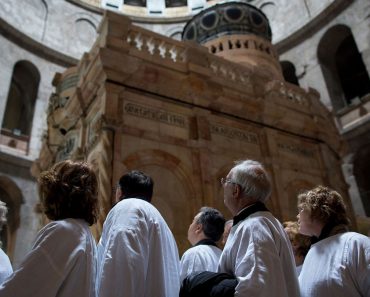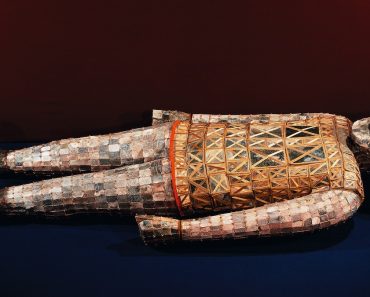Football, known as soccer in the United States, remains the world’s most popular sport. For generations England has proudly worn the badge of football’s founding nation, but new archaeological discoveries in southern Scotland suggest that “the beautiful game” may have much older — and distinctly Scottish — roots.
Turning traditional beliefs on their head, historian and sports archaeologist (yes, there is such a thing!) Ged O’Brien has uncovered compelling evidence pointing to a 17th-century football pitch in Kirkcudbrightshire county as the first playing true field, where the modern version of the sport was originally played. If true, this dates back decades before England’s claim to have formally recognized the game and centuries before professional clubs were established.
An Outraged Minister and a Hidden Football Field
The story begins with a letter from Reverend Samuel Rutherford, who served as minister at Anwoth Old Kirk (Church) between 1627 and 1638. Rutherford’s writings reveal his dismay at finding parishioners playing football on Sabbath afternoons at Mossrobin Farm, a location just west of Gatehouse of Fleet near the Solway Firth. In an attempt to ban the games, Rutherford reportedly ordered a line of stones to be placed across the field — a primitive but effective “no ball games” sign.

Anwoth Old Kirk ruins (1626), including a medieval bell, gravestones, mausoleum, and a Samuel Rutherford plaque over the doorway. (Chris Newman/Geograph UK/CC BY-SA 2.0).
Driven by this tantalizing clue, O’Brien and a team of archaeologists set out to investigate. They uncovered a straight line of 14 large stones on the former Mossrobin farmland. Soil analysis suggests these stones were arranged in the 17th century, around the time Rutherford wrote his complaint. The discovery provides rare physical evidence of an organized playing field at a time when written records of working-class recreation were exceedingly rare.
According to O’Brien, the importance of Rutherford’s letter cannot be overstated.
“This is one of the most important sentences I have ever read in football history, because it specifically identifies the exact place the football pitch was,” he told The Times. He believes the find challenges the long-standing assumption that modern football evolved exclusively from English public schools in the 19th century, showing that it has older roots in the recreational activities of England’s neighbor.
Civilized Football, Not the Rowdy Kind
Historians generally acknowledge that rudimentary forms of ball games — often chaotic and violent, as befit the times in which they were played — existed for centuries in places like ancient Greece, Rome, Mesoamerica, and medieval Britain. These early versions, known fittingly as “mob football,” involved massive, unregulated crowds chasing a ball through town streets and countryside fields, often resulting in serious injuries and significant property damage.
What makes the Scottish discovery so significant, according to O’Brien, is that it points to a more organized, civilized form of football — one that aligns more closely with today’s sport.
“If you’re playing football every Sunday of every year, you’ve got rules because you have to agree on rules,” he explained. “You couldn’t play violent football because you needed to work on Monday.”

Overhead view of field with large stones near Anwoth Old Kirk identified by Ged O’Brien as the first true soccer field. (BBC).
“I have always thought football has been played in Scotland for hundreds of years,” he continued. “Not mob-football, but proper football. Of course it has always been very hard to prove it because working people never kept records.”
Rather than a lawless mob, the people of Anwoth appear to have been engaging in a regular, rule-governed game, predating England’s codified football rules by more than two centuries. O’Brien argues that this version of football is the “ancestor, the grandparent, of modern world football,” and insists that Scotland’s contribution to the sport’s development has long been underestimated—an error he is bound and determined to correct.
Football’s Scottish Origins Established?
The implications of O’Brien’s findings could be far-reaching. Sheffield FC, founded in 1857, is currently recognized as the world’s oldest football club, and the establishment of England’s Football Association in 1863 marked the beginning of formalized rules. Scotland’s own Football Association followed in 1873, and by 1872, Scotland and England played the world’s first official international match. But if the people of Anwoth were playing regular, organized football in the early 1600s, the timeline of football’s evolution must be reconsidered.
Moreover, if this is what happened Scotland’s early dominance in international football begins to make more sense. As O’Brien points out, when Scottish teams first competed against English sides, they often outclassed them. “It’s absolutely no surprise,” he said, “because these people are 200 years in front of what England is doing.”

Dunblane (Scotland) Football club, 1889. (Public Domain).
While historians previously credited the rise of modern football to the structured environments of English public schools like Eton and Harrow, the Mossrobin Farm discovery paints a different picture. In this alternative scenario the invention of football was a grassroots affair, as everyday Scots, far removed from elite institutions, were laying the foundations of what would ultimately become a global phenomenon.
O’Brien is hopeful that Anwoth will soon be recognized as a cornerstone of football’s true history. As he puts it: “You can be up the side of a mountain in the Himalayas watching a football game, and the ghosts of Anwoth will be watching.”
Top image: 19th century soccer match between England and Scotland, with the ball believed to be hidden somewhere in the middle of the mass of men. From the Illustrated London News, 1871.
Source: Public Domain.
By Nathan Falde







